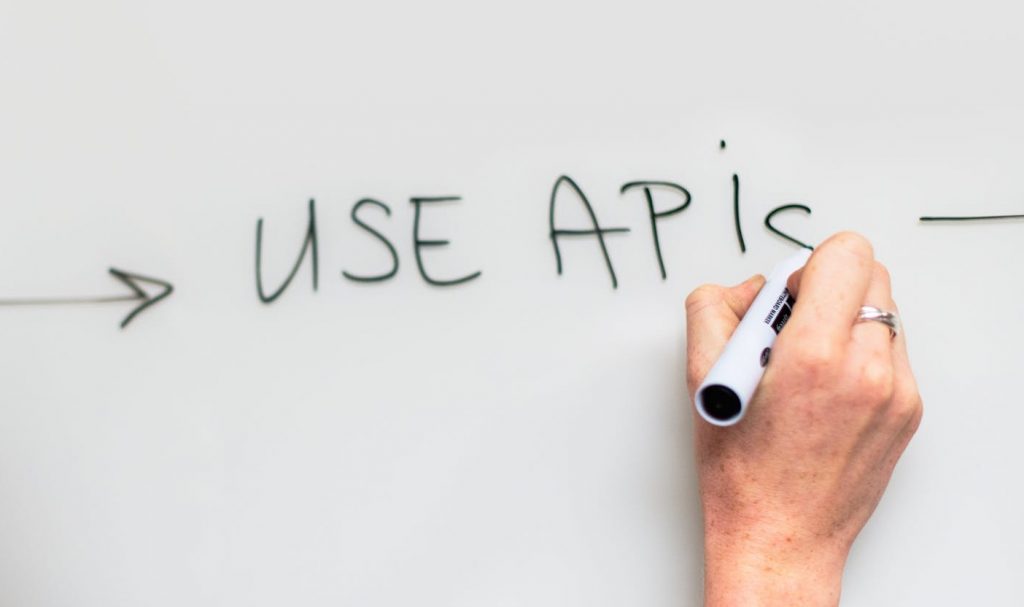Brokers With APIs
Brokers with APIs allow traders to integrate sophisticated investing tools with existing software. An Application Programming Interface essentially acts as an intermediary between your broker’s platform and third-party tools. Importantly, APIs have grown in popularity in recent years as an increasing number of retail investors have shifted to automated trading. This guide explains how APIs work, plus their benefits and drawbacks. We also list the top brokers with APIs in 2025.
What Is An API?
API stands for Application Programming Interface. It is a type of program that allows one piece of software to communicate with another by requesting data and sending instructions. Meta, Amazon and many other companies have established their own APIs, allowing companies to interact with and access their services remotely.
An API essentially acts as the middleman when two machines or applications want to connect to complete a task. For example, when you sign in to Twitter on your mobile, the app uses an API to fetch your account credentials. Twitter then acquires the data from its servers and returns it to the mobile app to complete the login.

How APIs Are Used In Trading
Trading APIs allow applications to communicate with a broker’s servers. For investors who make use of algorithmic models, in particular, APIs let them receive live pricing whenever their model generates a signal, before executing buy or sell positions. And while this may seem commonplace now, it was not always possible. Before APIs, traders had to screen for market opportunities in one application and then manually place trades in another.
Importantly, trading APIs let investors place instant and accurate trades, meaning they don’t miss out on market opportunities. Traders can use APIs to build and automate their own signals and indicators, create custom alerts for spreads and prices, or even design their own trading terminal.
Trading APIs can be split into two main categories:
- Third-party applications – Many popular third-party apps use a broker’s API to receive real-time pricing and place trades. MetaTrader 4, for example, uses the API of the investor’s chosen broker to execute trades.
- Developer applications – Today, lots of traders develop their own automated trading systems using programming languages like Python and Java. Without APIs, these systems would not be able to view a broker’s pricing data or open and close positions.
The best brokers with APIs have libraries with pre-written code to help you get started. This information is usually available on a firm’s website and includes instructions on how to place trades and execute key functions, ensuring developers don’t need to start from scratch.
Comparing Brokers With APIs
With a long list of online brokers offering varying API compatibility and functionality, finding the right provider can feel daunting. Use our guide to compare brokerages:
- Pricing – If using third-party APIs, make sure the one-off charge of subscription fee doesn’t erode profits.
- Limits – Brokers may have restrictions on how many trades you can place in an hour and the frequency with which you can access historical data. This is to protect their servers and processing power. Most firms publish details of any quotas within their API documentation.
- Coding language – APIs are developed in multiple languages, from Python to Java and C++. Make sure you are familiar with the options available. The top providers also provide example code and instructions to help beginners.
- Demo solution – When setting up and developing your own API, a free demo account is a good place to test and refine strategies. You can also backtest against historical data to check for bugs and issues.
- Types of APIs: Various application programming interfaces exist with popular options including REST, WebSocket and SOAP. Each has its respective pros and cons so find a solution that best meets your needs.
- Market access: Check the broker offers access to the markets you want to trade, for example, forex, stocks, cryptos or commodities.
- Customer support: Responsive and technically savvy customer service agents can prove useful for novices. Check for opening hours and communication channels so you can speak to the support team when you need them.
Advantages of Brokers With APIs
The key benefits of trading with APIs include:
- Build and populate your own trading terminal
- Design and automate signals and indicators
- Customize automated trading strategies
- Create bespoke notifications and alerts
- Access historical data for backtesting
Disadvantages of Brokers With APIs
There are also some downsides to trading with APIs:
- Some brokers limit or restrict API functionality to prevent overloading their bandwidth
- Providers may charge fees to use trading APIs
- Risk of coding and development errors
- Programming knowledge required
- Time intensive to develop

Getting Started
Use this step-by-step tutorial to start trading at brokers with APIs:
- Develop a trading strategy and write it in your preferred programming language. Alternatively, sign up with a third-party provider
- Find a broker that you would like to trade with using our comparison guide. Remember to check for API compatibility and any limits or quotas
- Open an account with your chosen broker and register for an API. You should then receive a security key that you can use to log in
- Test your API and trading strategy using your broker’s demo account. You can then switch to a real-money account when you are ready
- When your strategy is set up correctly, open a live account and start trading. Regularly monitor the API to make sure the API and corresponding services are working smoothly
Bottom Line on Brokers With APIs
Brokers with APIs provide a number of useful services to traders. Not only can they help automate the trading process, but they also allow investors to create custom signals, price alerts or even build bespoke trading terminals. Of course, having existing knowledge of coding languages and programming will help, but there are plenty of tutorials available for free online so even beginners can get involved. Use our list of brokers with APIs to start trading today.
FAQ
What Are Trading APIs?
Trading APIs allow a user’s front-end system to be connected to a broker’s back-end system. This lets traders use third-party platforms while accessing a broker’s real-time pricing, historical data and trade execution capabilities.
Who Can Use Trading APIs?
APIs are used by online brokers to link to third-party software like MetaTrader 4 and MetaTrader 5. They are also be used by individual investors to create custom indicators, tools and automated trading strategies.
What Are Brokers With APIs?
Brokers with APIs let you receive historical data and real-time prices from their server while sending back instructions to place trades. Investors can essentially leverage algorithmic trading models to generate signals and place buy or sell orders.
Do Brokers Charge Fees For APIs?
Some brokers with APIs charge to use their services. Pricing can come in the form of a one-off fee or a weekly / monthly subscription charge. Platforms may also impose limits on how many positions can be entered a minute, hour or day, in addition to how regularly you can access historical data. Check the API documentation available on a broker’s website to review fees and usage rules.
Which Is The Best Broker With An API?
There are many good options when it comes to brokers with APIs. Use our comparison guide above to find a suitable option based on your specific requirements. Also remember to check the brokerage supports a programming language that you are familiar with and check for any limits or quotas.
